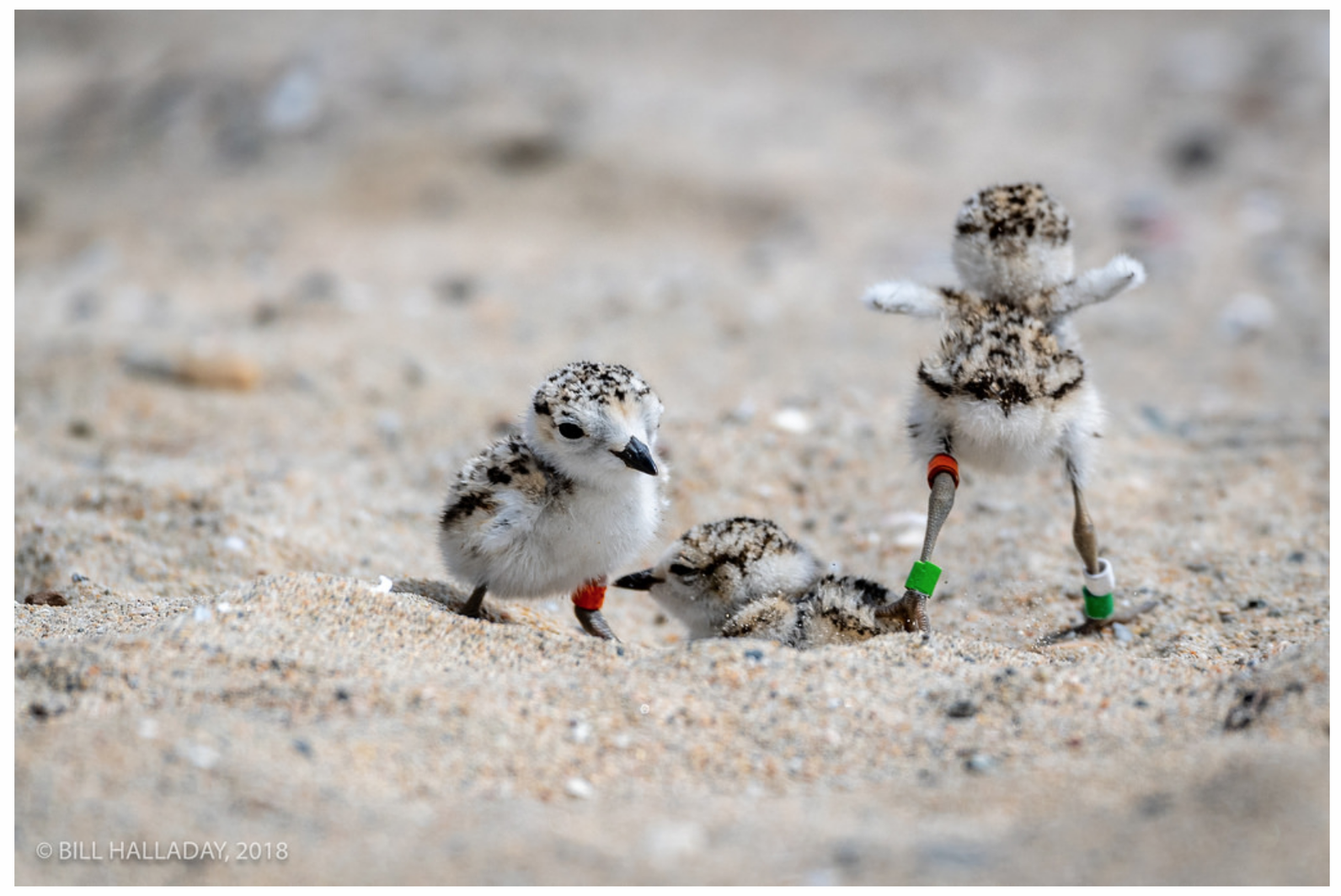This video shows Western Snowy Plover chicks on Huntington Beach and Ormond Beach in Ventura. Video courtesy the USFWS and Ventura Audubon.
The Western Snowy Plover reached a milestone in its recovery for the first time last year, approaching an estimated 3,000 individuals on the Pacific Coast.* While celebration is in order, the path to this point took lots of hard work – this is a just a milestone with the finish line still far away.
The estimate of 3,000 individuals is based on the 2017 breeding season count of 2,350 adults, with a correction factor of 1.3 multiplied to that number, as advised in the Western Snowy Plover recovery plan, to account for the fact that not all birds are counted during the survey period.
The Western Snowy Plover was listed as Threatened under the Endangered Species Act in 1993 and could not have reached this recovery goal without that protection. The Plover needs to hit that goal for 10 years before a delisting would be considered. And it will need a lot of help over the next 10 years from plover supporters at California State Parks, the U.S. Fish & Wildlife Service, researchers, and volunteers like those from local Audubon chapters who secure habitat, raise awareness, and monitor nesting sites.

Audubon chapters, big and small, across coastal California are making big impacts to support the recovery of these birds. Many of these chapters have been monitoring birds, educating the public, and protecting nesting site for nearly 10 years.
Sea and Sage Audubon has a monitoring program for the Western Snowy Plover and other shorebirds like the Least Tern. This year, chapter volunteers monitored two successful nesting pairs, which fledged four chicks for the first time on Huntington Beach in over five decades.
Ventura Audubon finds nests, establishes symbolic fencing, and collects data for research. This year, the chapter has installed a webcam documenting nesting birds.
Mendocino Coast Audubon protects wintering birds, has an extensive outreach program and has completed restoration projects like the one at 10 mile beach to protect the birds.
These are just three of the many Audubon chapters working hard to protect Western Snowy Plovers on California beaches.
Note: An earlier version of this story incorrectly stated that the population was at an estimated 3,000 nesting pairs, when the number refers to individuals. Also, the article suggested that the population was limited to California, when it actually covers the Pacific Coast.



